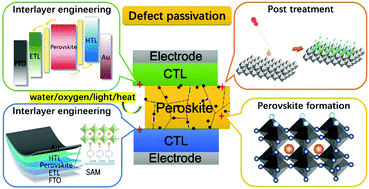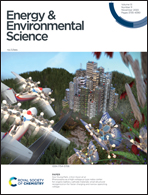Defect passivation strategies in perovskites for an enhanced photovoltaic performance
Abstract
Since the first introduction of the organic–inorganic hybrid perovskite in the field of optoelectronics, extraordinary progress in both the photoelectric-conversion-efficiency and stability of perovskite solar cells (PSCs) have been witnessed. However, a variety of drawbacks associated with defects in PSCs, such as energy deficits, ion migration, operational instability and hysteresis, greatly hinder the potential industrial applications of PSCs. Herein, a systematic and comprehensive understanding of the origin, classification, nature, relationships and overlapping effects of defects in perovskite is summarized and reviewed. According to their positions in the energy structure relative to band edges, shallow- and deep-level defects are summarized, while point defects, undercoordinated ions, impurities and pinholes are categorized based on a dimension-criterion. We look at the established understanding of how the detrimental defects induce non-radiative recombination, charge trapping and scattering, ion migration and hysteresis, providing a relatively clear relationship between the performance and defects in perovskite films. An overview of the defect passivation strategies is presented on the fabrication route, including film formation, post-treatment and interlayer engineering between the perovskite layer and charge transport layer, giving a unique perspective. Based on defect passivation engineering, challenges and suggestions to break the bottlenecks of PSCs on the way to commercialization are proposed.



 Please wait while we load your content...
Please wait while we load your content...